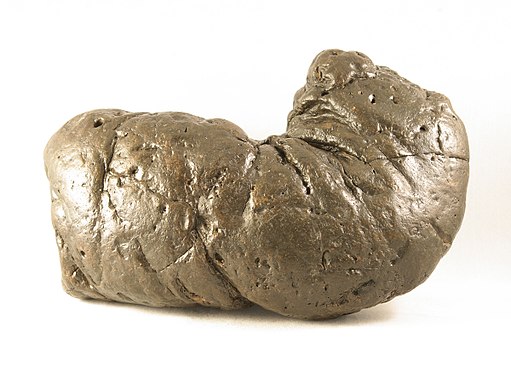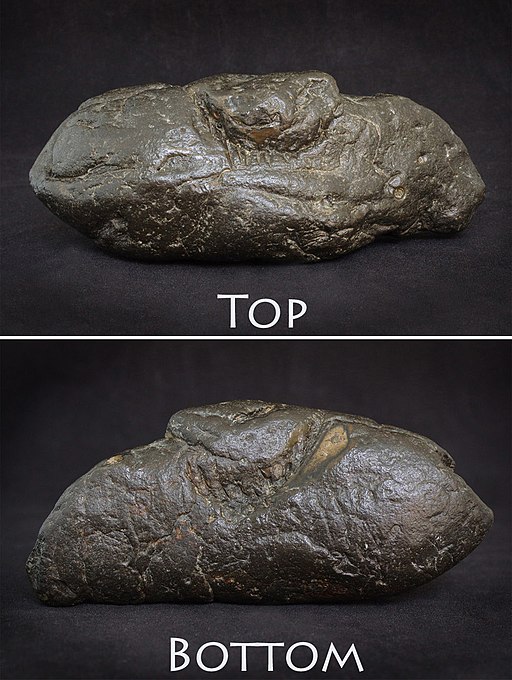Listen to Episode 30 on PodBean, Spotify, YouTube, or that other place you get podcasts!
Everybody poops! Including prehistoric creatures throughout time! This episode, we discuss the incredible diversity and utility of millions of years’ worth of fossilized feces: coprolites!
In the news
Some plants are evolving away from defensive traits now that animals are exploiting them.
Two long-separated raven lineages seem to be undergoing “reverse speciation”
Why are armored dinosaurs so often fossilized upside-down? An answer!
Long-lived sponges record millennia of ocean chemistry in their huge spines.
The Wonderful World of Poop
Coprolites are fossilized feces. They’re not quite as common as bones and teeth in the fossil record, but they are as diverse as the animals that produce them, and ever since Reverend William Buckland first invented the word “coprolite” in 1829 (learn some coprolite history here), they have been revealing incredible information about ancient life that no other fossils provide.
Once you’ve identified a coprolite (no easy task) and linked it to a probably pooper (even harder!), there’s a long list of insights you can glean. This episode was mostly a list of cool studies that show the kind of information we can learn from coprolites, so here’s a bunch of them:

Coprolites can tell us about ancient diets:
Chin et al. 2017. Dinosaur coprolites showed that some plant-eaters also took in crustaceans.
Marlar et al. 2000. A human coprolite with remains of human muscle tissue – evidence of cannibalism!
Chin et al. 1998. A 44-centimeter “king-sized coprolite” full of bone fragments probably came from Tyrannosaurus and reveals how the dinosaur ate and digested its food.
Boast et al. 2018. Ancient DNA from New Zealand moa and kakapo coprolites hint at the ecological roles these birds played before most of them died out.
Godfrey and Smith 2010. This coprolite has shark bite marks preserved in it!

Coprolites can tell us what lived where and when:
Prasad et al. 2005. Dinosaur coprolites from the Cretaceous hold an unexpected ancient variety of grasses: evidence for grass evolution … from poop!
Yates et al. 2012. The first freshwater bivalves known from the Early Triassic came from dung! The authors call coprolites “microenvironments of exceptional preservation.”
Chin and Gill 1996. Dinosaur feces shows evidence of burrowing by dung beetles! In fact, dung beetles left poop-y trace fossils all over the fossil record!
Fossilized poop from Oregon has been proposed as the oldest evidence of humans in North America (though this is disputed).

Coprolites can reveal the history of parasites!
Dentzien-Dias et al. 2013. These spiral-shaped shark coprolites, 270 million years old, held almost 100 tiny tapeworm eggs: the oldest evidence of tapeworms in a vertebrate.
Poinar and Boucot 2006. Protist and worm parasites in dinosaur coprolites!
Lafferty and Hopkins 2018. Ancient DNA from moa poop reveals lots of parasites died out with the birds.
More on coprolites:
A great article about coprolite research at Earth Magazine.
Lots of pictures at Oceans of Kansas.
And check out George Frandsen’s Poozeum.
I lost track of the reference, but there’s a paper somewhere in the 1800’s that talks about ammonite coprolite in the Solnhofen formation of Germany. Here’s an example: pic.twitter.com/WynF3vRlBm
— Fossil Locator (@FossilLocator) February 18, 2018
Special thanks to the folks who suggested great coprolite studies on Twitter, and to our pal Jim Mead for sharing his excrement expertise!
—
If you enjoyed this topic and want more like it, check out these related episodes:
We also invite you to follow us on Twitter, Facebook, or Instagram, buy merch at our Zazzle store, join our Discord server, or consider supporting us with a one-time PayPal donation or on Patreon to get bonus recordings and other goodies!
Please feel free to contact us with comments, questions, or topic suggestions, and to rate and review us on iTunes!
Keep up the great work guys! I really enjoy your podcast and look forward to every one!
LikeLike
Thanks!
We’re glad to hear our ramblings on poop (and other topics) are being enjoyed.
LikeLike
I think this has got to be the funniest one yet!! But disgustingly so fascinating because as you said, everyone does it so we all understand it!
LikeLike